Sergey Rodionov
An Evaluation of GPT-4 on the ETHICS Dataset
Sep 19, 2023

Abstract:This report summarizes a short study of the performance of GPT-4 on the ETHICS dataset. The ETHICS dataset consists of five sub-datasets covering different fields of ethics: Justice, Deontology, Virtue Ethics, Utilitarianism, and Commonsense Ethics. The moral judgments were curated so as to have a high degree of agreement with the aim of representing shared human values rather than moral dilemmas. GPT-4's performance is much better than that of previous models and suggests that learning to work with common human values is not the hard problem for AI ethics.
Improving Deep Models of Person Re-identification for Cross-Dataset Usage
Jul 23, 2018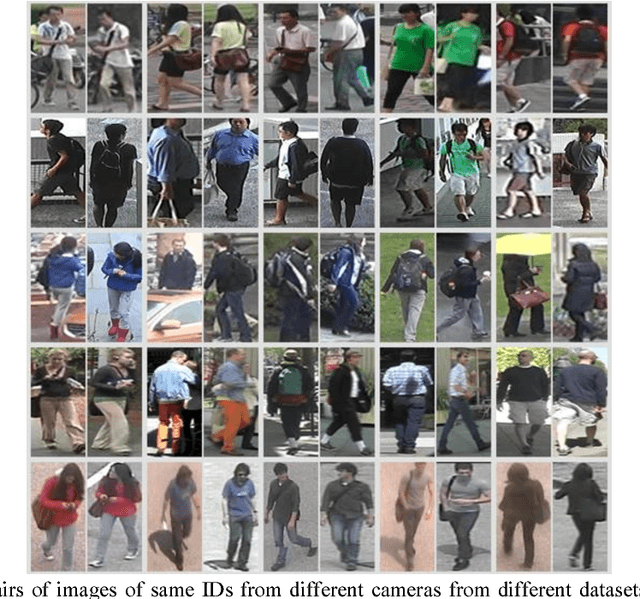

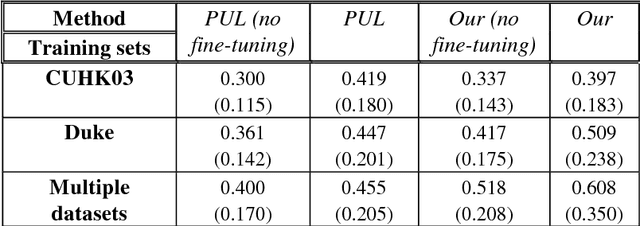
Abstract:Person re-identification (Re-ID) is the task of matching humans across cameras with non-overlapping views that has important applications in visual surveillance. Like other computer vision tasks, this task has gained much with the utilization of deep learning methods. However, existing solutions based on deep learning are usually trained and tested on samples taken from same datasets, while in practice one need to deploy Re-ID systems for new sets of cameras for which labeled data is unavailable. Here, we mitigate this problem for one state-of-the-art model, namely, metric embedding trained with the use of the triplet loss function, although our results can be extended to other models. The contribution of our work consists in developing a method of training the model on multiple datasets, and a method for its online practically unsupervised fine-tuning. These methods yield up to 19.1% improvement in Rank-1 score in the cross-dataset evaluation.
Genetic algorithms with DNN-based trainable crossover as an example of partial specialization of general search
Jul 18, 2018


Abstract:Universal induction relies on some general search procedure that is doomed to be inefficient. One possibility to achieve both generality and efficiency is to specialize this procedure w.r.t. any given narrow task. However, complete specialization that implies direct mapping from the task parameters to solutions (discriminative models) without search is not always possible. In this paper, partial specialization of general search is considered in the form of genetic algorithms (GAs) with a specialized crossover operator. We perform a feasibility study of this idea implementing such an operator in the form of a deep feedforward neural network. GAs with trainable crossover operators are compared with the result of complete specialization, which is also represented as a deep neural network. Experimental results show that specialized GAs can be more efficient than both general GAs and discriminative models.
Metric Embedding Autoencoders for Unsupervised Cross-Dataset Transfer Learning
Jul 18, 2018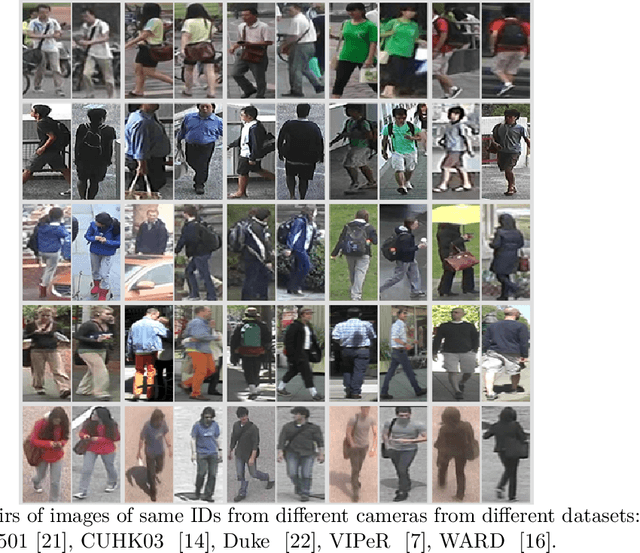

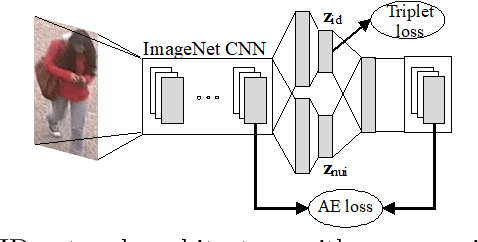

Abstract:Cross-dataset transfer learning is an important problem in person re-identification (Re-ID). Unfortunately, not too many deep transfer Re-ID models exist for realistic settings of practical Re-ID systems. We propose a purely deep transfer Re-ID model consisting of a deep convolutional neural network and an autoencoder. The latent code is divided into metric embedding and nuisance variables. We then utilize an unsupervised training method that does not rely on co-training with non-deep models. Our experiments show improvements over both the baseline and competitors' transfer learning models.
HyperNets and their application to learning spatial transformations
Jul 12, 2018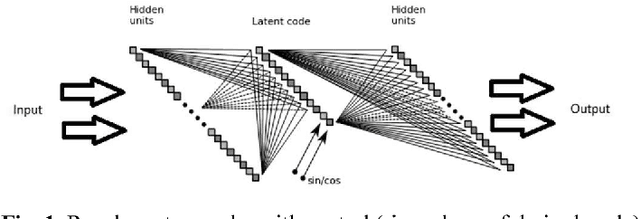

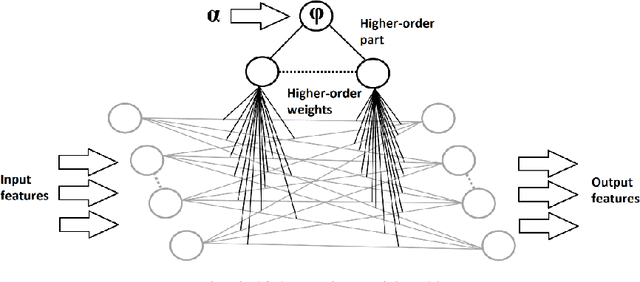

Abstract:In this paper we propose a conceptual framework for higher-order artificial neural networks. The idea of higher-order networks arises naturally when a model is required to learn some group of transformations, every element of which is well-approximated by a traditional feedforward network. Thus the group as a whole can be represented as a hyper network. One of typical examples of such groups is spatial transformations. We show that the proposed framework, which we call HyperNets, is able to deal with at least two basic spatial transformations of images: rotation and affine transformation. We show that HyperNets are able not only to generalize rotation and affine transformation, but also to compensate the rotation of images bringing them into canonical forms.
Vision System for AGI: Problems and Directions
Jul 10, 2018Abstract:What frameworks and architectures are necessary to create a vision system for AGI? In this paper, we propose a formal model that states the task of perception within AGI. We show the role of discriminative and generative models in achieving efficient and general solution of this task, thus specifying the task in more detail. We discuss some existing generative and discriminative models and demonstrate their insufficiency for our purposes. Finally, we discuss some architectural dilemmas and open questions.
Universal Empathy and Ethical Bias for Artificial General Intelligence
Aug 03, 2013


Abstract:Rational agents are usually built to maximize rewards. However, AGI agents can find undesirable ways of maximizing any prior reward function. Therefore value learning is crucial for safe AGI. We assume that generalized states of the world are valuable - not rewards themselves, and propose an extension of AIXI, in which rewards are used only to bootstrap hierarchical value learning. The modified AIXI agent is considered in the multi-agent environment, where other agents can be either humans or other "mature" agents, which values should be revealed and adopted by the "infant" AGI agent. General framework for designing such empathic agent with ethical bias is proposed also as an extension of the universal intelligence model. Moreover, we perform experiments in the simple Markov environment, which demonstrate feasibility of our approach to value learning in safe AGI.
Direct Uncertainty Estimation in Reinforcement Learning
Jun 25, 2013
Abstract:Optimal probabilistic approach in reinforcement learning is computationally infeasible. Its simplification consisting in neglecting difference between true environment and its model estimated using limited number of observations causes exploration vs exploitation problem. Uncertainty can be expressed in terms of a probability distribution over the space of environment models, and this uncertainty can be propagated to the action-value function via Bellman iterations, which are computationally insufficiently efficient though. We consider possibility of directly measuring uncertainty of the action-value function, and analyze sufficiency of this facilitated approach.
Extending Universal Intelligence Models with Formal Notion of Representation
Jun 06, 2013Abstract:Solomonoff induction is known to be universal, but incomputable. Its approximations, namely, the Minimum Description (or Message) Length (MDL) principles, are adopted in practice in the efficient, but non-universal form. Recent attempts to bridge this gap leaded to development of the Representational MDL principle that originates from formal decomposition of the task of induction. In this paper, possible extension of the RMDL principle in the context of universal intelligence agents is considered, for which introduction of representations is shown to be an unavoidable meta-heuristic and a step toward efficient general intelligence. Hierarchical representations and model optimization with the use of information-theoretic interpretation of the adaptive resonance are also discussed.
Universal Induction with Varying Sets of Combinators
Jun 01, 2013Abstract:Universal induction is a crucial issue in AGI. Its practical applicability can be achieved by the choice of the reference machine or representation of algorithms agreed with the environment. This machine should be updatable for solving subsequent tasks more efficiently. We study this problem on an example of combinatory logic as the very simple Turing-complete reference machine, which enables modifying program representations by introducing different sets of primitive combinators. Genetic programming system is used to search for combinator expressions, which are easily decomposed into sub-expressions being recombined in crossover. Our experiments show that low-complexity induction or prediction tasks can be solved by the developed system (much more efficiently than using brute force); useful combinators can be revealed and included into the representation simplifying more difficult tasks. However, optimal sets of combinators depend on the specific task, so the reference machine should be adaptively chosen in coordination with the search engine.
 Add to Chrome
Add to Chrome Add to Firefox
Add to Firefox Add to Edge
Add to Edge